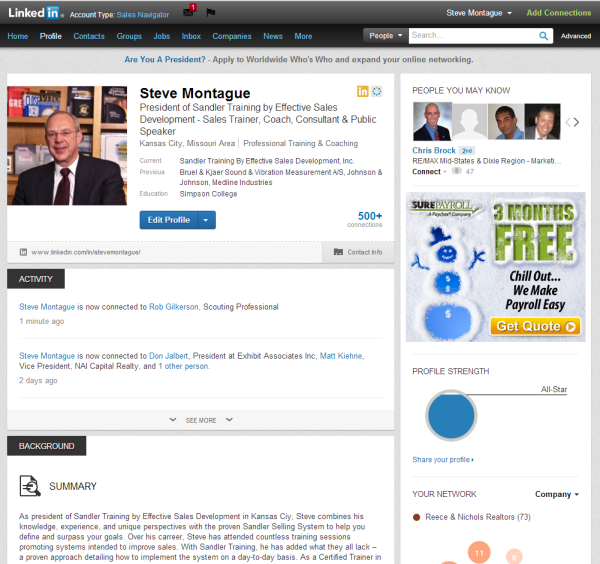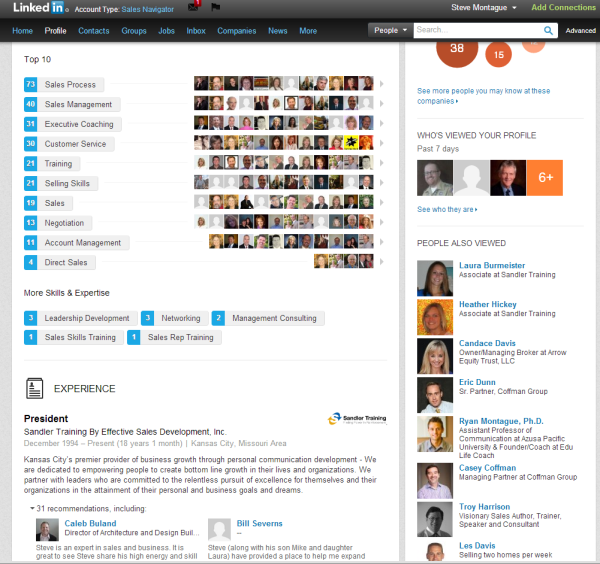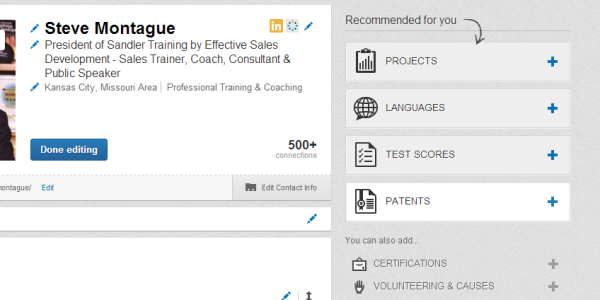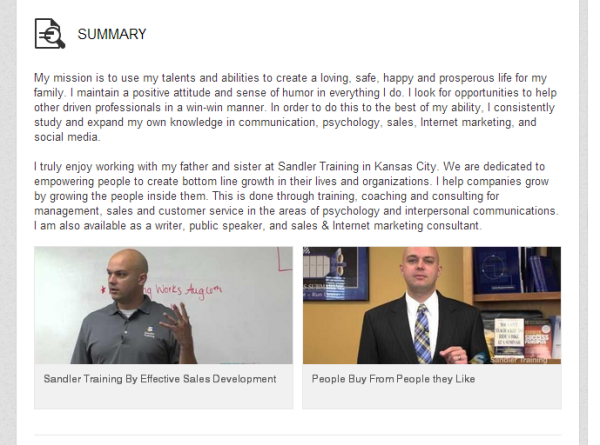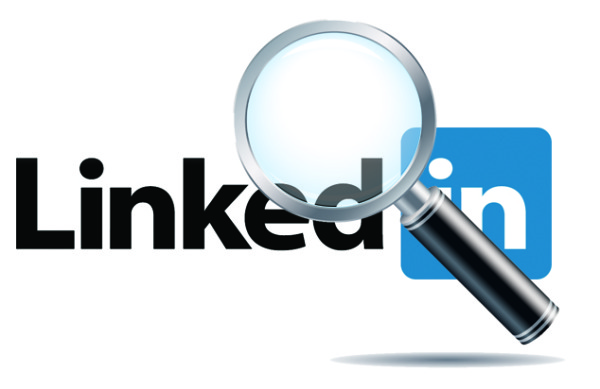
by MIMO Solutions | Internet Marketing, marketing, Search Engine Optimization, Smarketing Blog, tips, Web Design
Responsive & Mobile-Friendly Web Design Is Now A MUST!
Google announced that it will be updating it’s search results to feature mobile-friendly content to mobile users and penalizing non-responsive websites! Read the full announcement here. That means if your website is not upgraded to a responsive or mobile-friendly format, you will begin to drop in the search results.
This year the number of Google searches from mobile devices will exceed the number of desktop searches for the first time in history, and Google is preparing for that landmark event. You should too!
“Starting April 21, Google will be expanding our use of mobile-friendliness as a ranking signal. This change will affect mobile searches in all languages worldwide and will have a significant impact in our search results.”
Call MIMO Solutions today for a free consultation and mobile-friendly website audit at 816-616-2201. Click here to call from your mobile device.
What is responsive web design?

Responsive web design means that the website changes and adapts to many screen sizes. It makes sure the website’s template width fits smartphones, tablets, laptops, and desktop computers. The website will read the type of device loading the page, and adjust the design to look great on that screen size.
Prior to about 5 years ago, this type of web design was really difficult to achieve. It required separate sites for mobile and desktop, but now one responsive design handles the changes automatically.
Click here to see a responsive, mobile-friendly website in action.
Just select the desired device in the top yellow bar, and you will see the website automatically resize itself to fit each screen size.
MIMO Solutions can upgrade your existing website to a responsive, mobile-friendly template!
How much does a mobile-friendly web design cost?
Not as much as you think!
MIMO Solutions is offering a special Google Update 2020 Special.
We will upgrade your existing WordPress site with a new mobile-friendly template for only $1,000! Or, we will upgrade your old static HTML site to WordPress with the responsive template for only $2,020.

by MIMO Solutions | Internet Marketing, Smarketing Blog, tips, Web Design
WordPress is the world’s most popular website platform, but is it right for your organization?
In order to choose the correct website platform, you will first need to determine your goals. It all depends on what you want it to do. That being said, WordPress is the world’s most popular platform for a reason. It can handle the simplest to the most complex website designs and functions. Here are a few of the reasons we prefer WordPress for most of our clients.
 Open Source Structure
Open Source Structure
WordPress was built and is maintained in an Open Source environment. What that means is that program is open to the public and free to use by all. A collection of programmers take suggestions and make upgrades based on the feedback that they get. Everything about WordPress is public information so programmers around the world can make improvements and suggestions to alter its functionality. What that means for you is that you don’t have to pay to use WordPress as your content management system for your website, and you shouldn’t have to pay for much custom programming, since the best programmers in the world have already developed solutions for most of the usual situations.
Responsive Designs
Possibly the greatest thing about WordPress over other platforms is its ability to make mobile-friendly websites without custom programming. Responsive design was developed in the last 5 years to allow websites to grow and shrink to fit the screen size of whatever device is being used to load you website. That means your site will look different on a smart phone than on a computer, and it will rearrange things to make it more user-friendly for your visitors. WordPress has some responsive capability out of the box, but adding a responsive design template can make a huge difference to your overall results, and it avoids the cost of having to build a separate mobile site or phone app.
Easy Design & Functionality Upgrades
The other great aspect of using design templates is the flexibility for upgrades. Technology and graphic design changes so rapidly that most people were having to completely rebuild their websites every 3-5 years. Now, with WordPress, you can keep your content, pictures, and database the same, and just overlay a new design on the frontend to bring your site up to date. This takes the cost of an upgrade from thousands of dollars down to as little as a few hundred if you can do it yourself.
 A Wide Range of Plugins & Tools
A Wide Range of Plugins & Tools
Another cool aspect of open source programs and WordPress in particular is the ability to add on custom plugins, widgets, and tools to add special functionality to your website. With WordPress, most of these are already built by amazing programmers. Want to add social media widgets, ecommerce functionality, or user profile pages? All of these are already made and can be added to your site very quickly. Some are free and open source, other premium plugins can cost up to a couple hundred dollars, but in general, you are saving thousands that this type of custom programming would take on a traditional website or a build-your-own solution.
Security & Speed
Everyone has heard about websites being hacked, and WordPress in no different. There is no way to completely stop hackers, but with WordPress security updates and fixes come very quickly, typically before your normal small business site ever gets affected. The largest platform in the world has already dealt with most of the challenges that custom solutions have yet to see, plus they have the best proactive and reactive staff to deal with these attacks. The same thing is true with speed. As the most popular solution on the web, WordPress has developed tools and servers have developed technology to make sure these sites stay up and stay fast for the life of the website.
 Getting started with WordPress
Getting started with WordPress
Are you sold? There are two ways to get started with WordPress. You can set up your own blog on WordPress.com or you can download the program and install it on your own hosting package and domain name. WordPress.com is free to get started, but it has some limitations for plugins and some design templates are more expensive. We recommend buying a small, dedicated WordPress hosting package and your domain name at Godaddy, and they have tools to automatically install the program for you. Another great way to get started is to go to WordPress.org and start learning more about it. There are plenty of articles, forums, and tutorial videos around the web to help you learn as well.
Call us today for a WordPress consultation and internet marketing plan at 816-616-2201.

by MIMO Solutions | attitude, behavior, sales, social media, social media marketing, Social Networking, tips
All salespeople would love more referrals and introductions to qualified prospects.
I don’t think I am breaking any new ground there, but how exactly does that work these days. Just a few years ago, you only had a couple of options. You could personally introduce two people, or you could call one person or the other on the phone and tell them to take the other’s call. Now you can give a LinkedIn introduction, recommendation, or endorse someone for a skill. You could like their post on Facebook or suggest a friend to someone. You might re-tweet an offer from a business friend on Twitter, or pin a picture of new product that you like on Pinterest. Of course you can do a combination of these on Google + or a number of other sites as well.
Somehow these new forms of referrals don’t seem to have the same pull as the referrals of a few years ago. Maybe it is just the shear number of things we “like” that they have been watered down, but I think there is more than that. I believe the impersonal nature of these endorsements damage the credibility of the referral and possibly the person doing the connecting.
In his book “Endless Referrals,” Bob Burg said, “All things being equal, people will do business with — and refer business to— those people they know, like and trust.”
There is no doubt that social networking has transformed this process. It is possible to do a quick search, and in seconds, “know” about a new person or business. We can even see what they are about and get a pretty good and accurate feeling about whether we “like” them or not based on their website or social media account, but what about that “trust” part. Social networking introductions, recommendations and referrals, also know as “social proof,” definitely add to the amount of trust developed.
My thought is that in most cases social proof provided online doesn’t add near the amount of trust that personal introductions did before the Internet era. Charles Green in his book, “The Trusted Advisor,” defined trust this way…
Trust Quotient = (Credibility + Reliability + Intimacy) / Self-Orientation
Using this as the standard definition of trust in an online referral situation, if your friend recommends a dentist on LinkedIn, there is a decent chance that you will find him credible in this situation, assuming he has used or at least knows this dentist. Also, it is unlikely that he is doing this selfishly, although sometimes companies do pay for endorsements online or run contests to like their company, in which case it would increase the self-orientation.
I think the lack of trust in online referrals falls between reliability and intimacy. Hopefully, we are all aware of the reliability issues with information found on the Internet. However let’s explore it in this context, sometimes people like and share endorsements for companies they truly like, and other times the just click “Like” without much thought. How can we trust that they really thought about the consequences of this action. Just because you follow a Celebrity on Twitter doesn’t mean you would go see their latest movie… It becomes very hard to rely on any specific action as a trigger for our trust in the level and intensity of the referral.
Perhaps more importantly, there is very little intimacy in these types of interactions. Intimacy in the trust equation means the sharing of honest, and sometimes private or vulnerable information. When we share our thoughts on social networks, we do so public and with a special filter on the information. We judge how it will be perceived by others who view it. For example, we might share intimately an embarrassing experience at the proctologist with close friend, but we will probably be more guarded about it on Facebook, Google or LinkedIn.
So what does this mean for salespeople trying to use social networks to increase their sales results?
Think about how you can be more credible, reliable, and intimate online.
There are tons of ways to increase your credibility. You can write blogs, bolster your LinkedIn profiles, request and share more endorsements and recommendations. You can compile and curate helpful information on your industry by sharing through your network. You can associate yourself with other experts and groups with credibility and continue growing your own connections and reach.
Reliability is a little trickier, but the good news is that there are tremendous opportunities online, especially in social media. Most people are very scattered and inconsistent with their social networking and sharing. I would encourage you to adopt a strict content and connection calendar to keep yourself on track. If you haven’t shared anything in months, your network and your prospects may assume that you are no longer active or no longer in business! That goes for updating your profiles, commenting on others posts, and responding to messages as well. The worst result would be to have a hot prospect reach out to you and that message to be sitting in an un-monitored inbox rotting while your trust quotient drops like a rock.
Finally, intimacy is the key to developing better relationships and better and more referrals. Think about how you can increase the 1-on-1 communication in your social networking. Blasting marketing messages to hundreds or thousands of followers isn’t very intimate communication, and it won’t help you build trust because it is also very selfish. Take the time to send private and personal messages to the people in your network. Offer specific and useful information to their causes, and you will find yourself having better relationships. When requesting and making introductions and referrals, do so with a specific and personal endorsement to increase the level of trust. It is one thing to say you like From Click To Close. It is another to say that you and Mike have been friends for years, and you are excited and impressed to see him grow into social networking expert.
I also recommend added connections ONLY with people you actually know offline and have a real relationship with… this will lead to a more intimate and useful network as a whole.
Be found, be likable, and be trust-worthy, and you will find yourself with more referrals!
How else can you build more trust and have more intimate conversations online?

by MIMO Solutions | attitude, goals, marketing, social media, social media marketing, Social Networking, tips
Before you go much further, you are going to need to decide which profiles you are going to use for selling through social networking, and which ones are going to be private and personal.
Some of you, who are more experience on social networks, already know what I am talking about here, so you might jump to the next section with the tips. If you don’t understand the privacy settings and primary purposes of the main social networks, keep reading. You definitely need to pay attention to who sees what!
For example, as a Business-To-Business consultant, I rarely add clients or networking partners to Facebook. Facebook has pictures of my young niece and nephew, other awkward family photos, and personal information about my wife and I, which I prefer not to be public. I focus my social networking for business on LinkedIn, so that is where I always request connections from clients and prospects. Twitter and Google+ are interesting because you don’t have to reciprocate, so others can follow you whether you add them back or not. To me this makes it very public since I can’t stop others from viewing and adding me. I tend to be very careful about what I post on these two and use them solely for business.
Google+ is the only social network to date that allows you to create “Circles” of contacts and only share certain information with certain circles. That means I can share business information with business circles, and family photos with my family circle. It is a very interesting tool, but use it wisely to avoid over-sharing.
The other choice you are going to need to make is whether or not you create a Business Page or add connections to your personal account.
Facebook and Google+ allow you to create dedicated pages for your business that operate with different settings and tools than your personal account. Twitter accounts can be used for anything, just make sure you decide your strategy before you get in too deep. LinkedIn is very interesting here. You can create a business page, but they will create one for you, once you have multiple employees on LinkedIn. After that, you can claim your business and customize your page.
I recommend that owners build audiences on business pages for marketing purposes to make sure they stick around should an employee leave, change roles, or the business change hands. However, people buy from people and they network with people, not companies. So for the purposes of this book, it will be better if you have a face and name to the business for sales purposes. You can’t create meaningful conversations with a brand.
Think about it. You can’t be friends with Pet Smart. You can’t connect with 24 Hour Fitness. You can’t start a conversation with Home Depot. People buy from human beings who they like. They talk to Eric at Home Depot. They connect with Laura, the personal trainer at 24 Hour Fitness. They are friends with Kim, the groomer at Pet Smart. Because of this, you should to try to put a name and a face with your online social networking activities.
That being said, it is way more important that you choose whether you are going to build business or personal profiles, than which type you actually choose.
Decide now whether you are marketing on behalf of a company or selling as a professional salesperson at the organization.
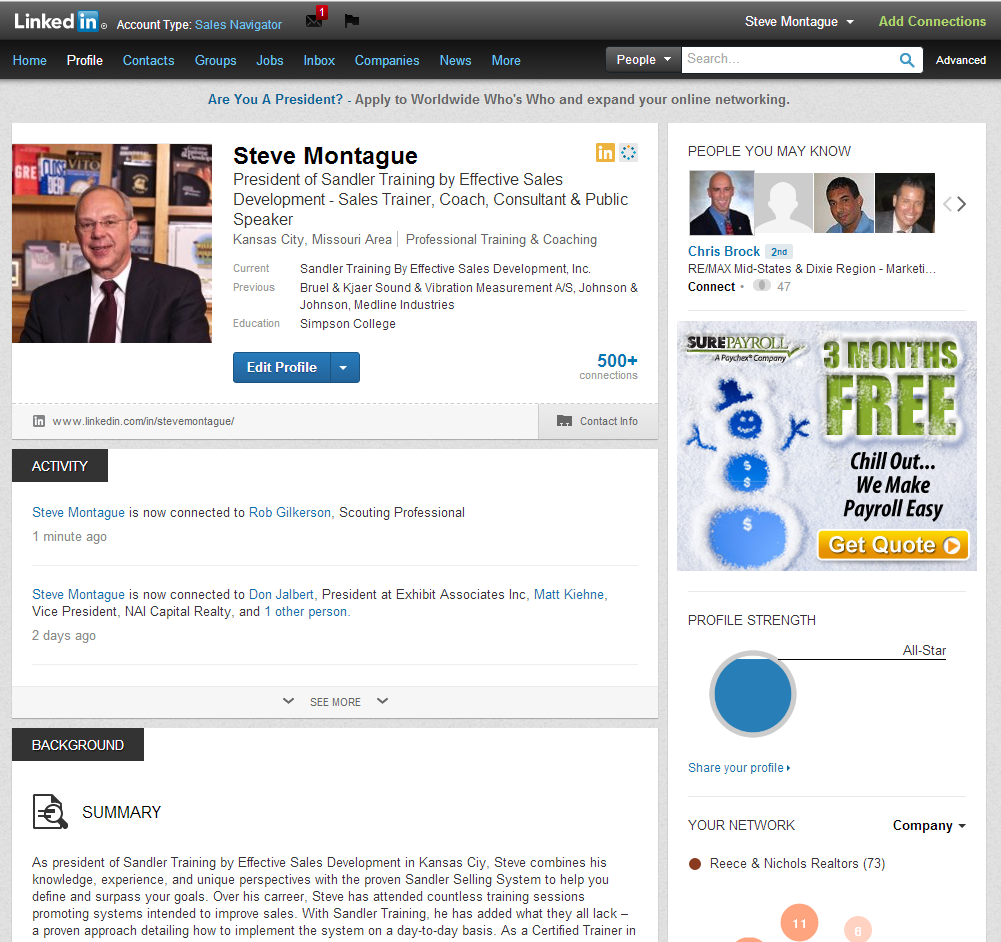
by MIMO Solutions | social media, social media marketing, Social Networking, tips
Here are a few tips for how to update and maximize your new LinkedIn profile layout:
If you hadn’t noticed yet, LinkedIn got a face-lift this week. There are larger profile photos, new activity news feed, enhanced recommendations, and big changes in the applications. Here are a few quick tips on how to maximize the new layout and features.
- Make sure your profile photo is up to date and large enough for the new layout.
- Check out your profile strength on the right-hand side. If you are not an All-Star or not 100% complete, make sure you edit your profile and add the missing parts.
- Pull your recommendations to the top. Click “Edit Profile” and look for the up and down arrows to click and drag elements of your profile around.
- Choose your recommendation words and phrases carefully. I can see these having a big impact on search ranking and profile rankings in the near future. Make sure your network is referring you for the topics you want! (See image below.)
- Take advantage of the new tools and elements of the profile. (See below.) You can now add projects, languages, patents, test scores, and certification sections to your profile. There is even a place for volunteering and causes you support.
- LinkedIn recently add the ability to “Follow” popular topics, people, companies, and news stories, so you don’t have to connect with celebrities and prominent business people, you can just follow their updates. Note: These show up on your profile at the bottom by default. Pick 3 to 5 of the most interesting topics and stay up to date in your industry.
- I think the coolest new feature is the ability to add video, slideshows and documents right to your profile. If you click “Edit Profile” you should see those options. (See example below.)
- Don’t forget about the “Share” and “Export Profile” options. If you click the arrow in the blue box at the top of each person’s profile including your own. You can share this profile with others, and export it to a PDF as an instant resume, or background info on a prospect or client. Print it off and read it over before you next sales call.
(Click on the image to enlarge.)
The world of social media is always changing so this information may only be valid for 24 hours, but I hope it helps you sort out some of the new LinkedIn Changes.
Let me know if you have any trouble and I will try to help!
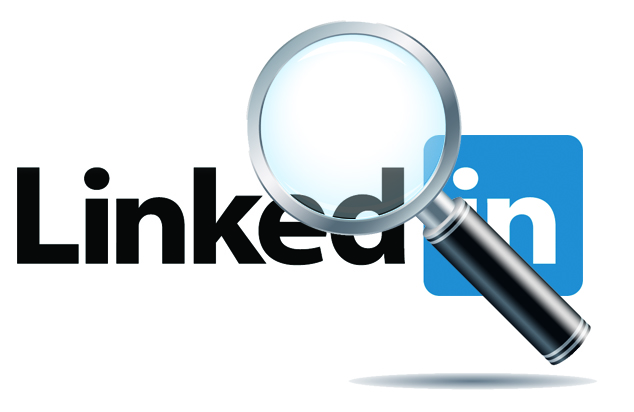
by MIMO Solutions | behavior, goals, marketing, sales, social media, social media marketing, Social Networking, tips
Whether you’re an experienced social networker or just a getting started, here are 10 steps to connecting with your target market on LinkedIn:
1. Create an up-to-date profile and/or fan page
Before you begin connection, be sure that your profile is up-to-date with an accurate description of what you do, your interests, and your contact info. Make sure you include your website addresses, a professional photo, and your skills list. If you have multiple businesses invite people in your appropriate target market to become fans of your niche-specific business page.
2. Follow the favorites
Connect with leaders in your field/industry, who have a lot of influence, connections and followers, and request a connection them. This includes popular products, TV shows, or other specific interests of your target market. Anytime you make a friend request, include a personal note, as that will improve the likelihood that they will accept your request. Say something like, “I’m a big fan and I’d love to have you in my network.” Once they have accepted your invitation, make comments about their status updates to help you get on the radar, and in front of their thousands of connections.
3. Friends of friends – 2nd Degree Connections
Take a look at the people in the network of your industry leaders, as they are probably part of your target market as well. Send friend requests to those of interest to you. When you friend someone that you only know by association, send a personal note as well, like “I discovered your profile in ‘s network and would like to get to know you better by adding you to my network.”
4. Use LinkedIn groups
Look for groups that may contain your target market. In your search for groups, use keywords that describe your niche, industry, geographic area, interests, or whatever other terms you might use to find members of your target market. Join and begin to participate in the group so that they begin to get to know you. Then pursue the member lists for good prospects, start with the members you’ve connected with or have commented on similar posts.
5. Invite your existing email lists and address books
You can use your existing email database to add people from your clients, prospects, and other current contacts if they fall within your target market definition. Add a note to the invitation and make sure you are clear and professional about your motivation. Make sure to give them the option to connect with your personally or just follow the business page.
6. People You May Know
LinkedIn will have a suggestion list for people you might know. These recommendations are pretty solid, because they are based on similar work history, mutual friends and interests. Take them up on their recommendation and add these to your network, only if you actually know the person and have an offline relationship of some kind.
7. Add by interest or industry
Do a people search by job title, industry, geographic location, or interest. People with those terms in their profile will show up in your search, and you can request to add them based on common interests. Even better, you can see which of your connections knows them and request an introduction.
8. Build the relationship
Once you connect with someone, you need to begin to get to know them and start building trust so that you become their top-of-mind expert in a particular area. Begin building the relationship by sending a quick “thank you” note through LinkedIn, as well as a comment about something on their profile that interests you or in which you have in common. Watch for their status updates, as well, and comment on these when appropriate. Note when people post announcements or change positions and congratulate them.
9. Integrate your marketing strategy
Once you have built a good online reputation and credibility on LinkedIn, you can begin mixing in your marketing messages. Social networking sites are designed to be casual and personal like a business networking event, so don’t just copy an advertisement or sales messages. All you want to do is keep what you do and who you are on the top of your prospects minds. You can casually mention what you’re working on in your status, announce events, and make comments offering to help people with your product or service. Remember, people can remove, hide or block you as easily as they added you in the first place.
10. No More Cold Calls – Start Actively Prospecting
Here’s where it gets fun and where it pays off. Let’s say you need to make 10 dials to set enough appointments to hit your numbers. You can research the best 10 prospects on LinkedIn and find the CEO’s name, get a little background, their email and phone information, see their secretary’s name, or even their up or down-line in the company’s organizational chart. You then shoot him an email through LinkedIn Mail with the subject line. “Question” and include your unique selling proposition, and ask if they would be open for a quick phone call the following week at a specific day and time to see if there is reason to work together.
If you repeat this process 10 times, you have now scheduled your 10 dials in your calendar, 10 CEOs are expecting your call, and you are fully armed to have a sales conversation with them next week. No more cold calls, and no more procrastination since you have scheduled appointments with connections.
Conclusion
No prospecting strategy works unless you consistently implement it over time. As a newbie to LinkedIn, you might want to spend as much as 60 minutes per day researching connections and participating in groups. As your network grows, you may spend only 15 minutes 3 times per week on LinkedIn. The key to success is to put this strategy on your calendar and make it a routine part of your ongoing prospecting behavior.
LinkedIn is strict and very particular about how its participants contact each other. Many sites, including LinkedIn limit the number of new invitations allowed in a given day or week. If you exceed this amount you can get penalized or removed for spamming. If you stick within the guidelines of people you know in person or at least you have their email addresses, you should stay within most limits. If you ever receive a warning, you should stop immediately for that day and reduce your efforts moving forward.
While social networking is an inexpensive marketing tool, it can be effective in helping you grow your business. You should maintain your other prospecting strategies, and simply add this strategy to your prospecting activity.
A well-rounded prospecting plan needs to include social networking, and it could mean that your prospect well will never run dry and you never have to make another cold call.




 A Wide Range of Plugins & Tools
A Wide Range of Plugins & Tools Getting started with WordPress
Getting started with WordPress





